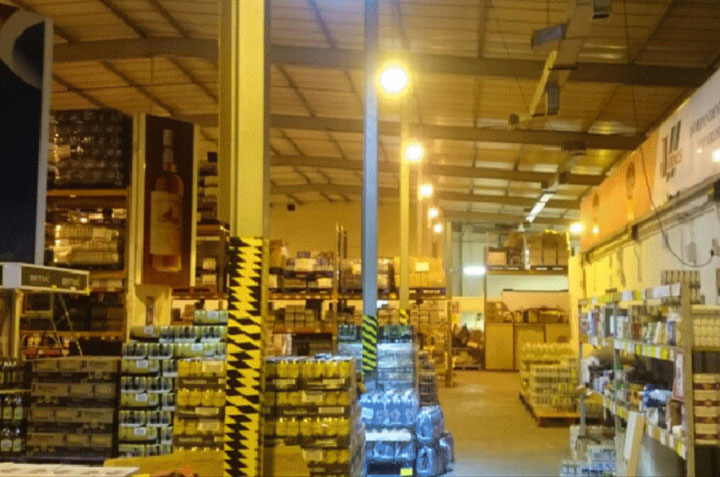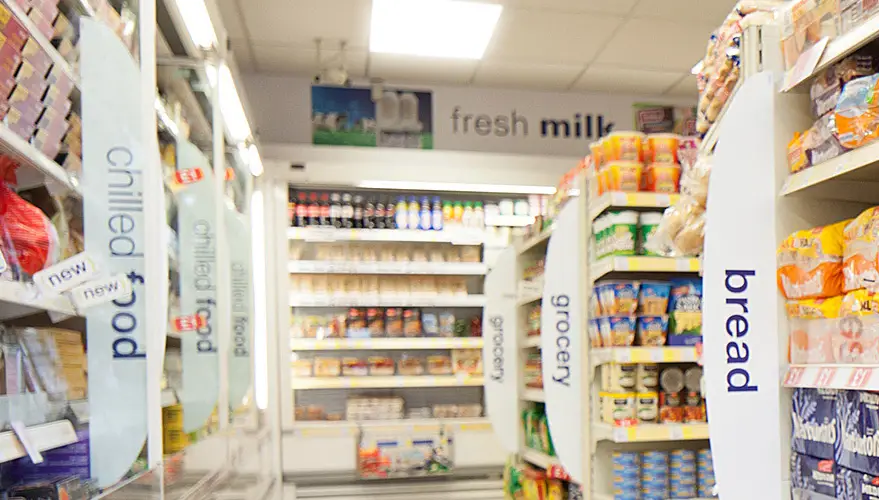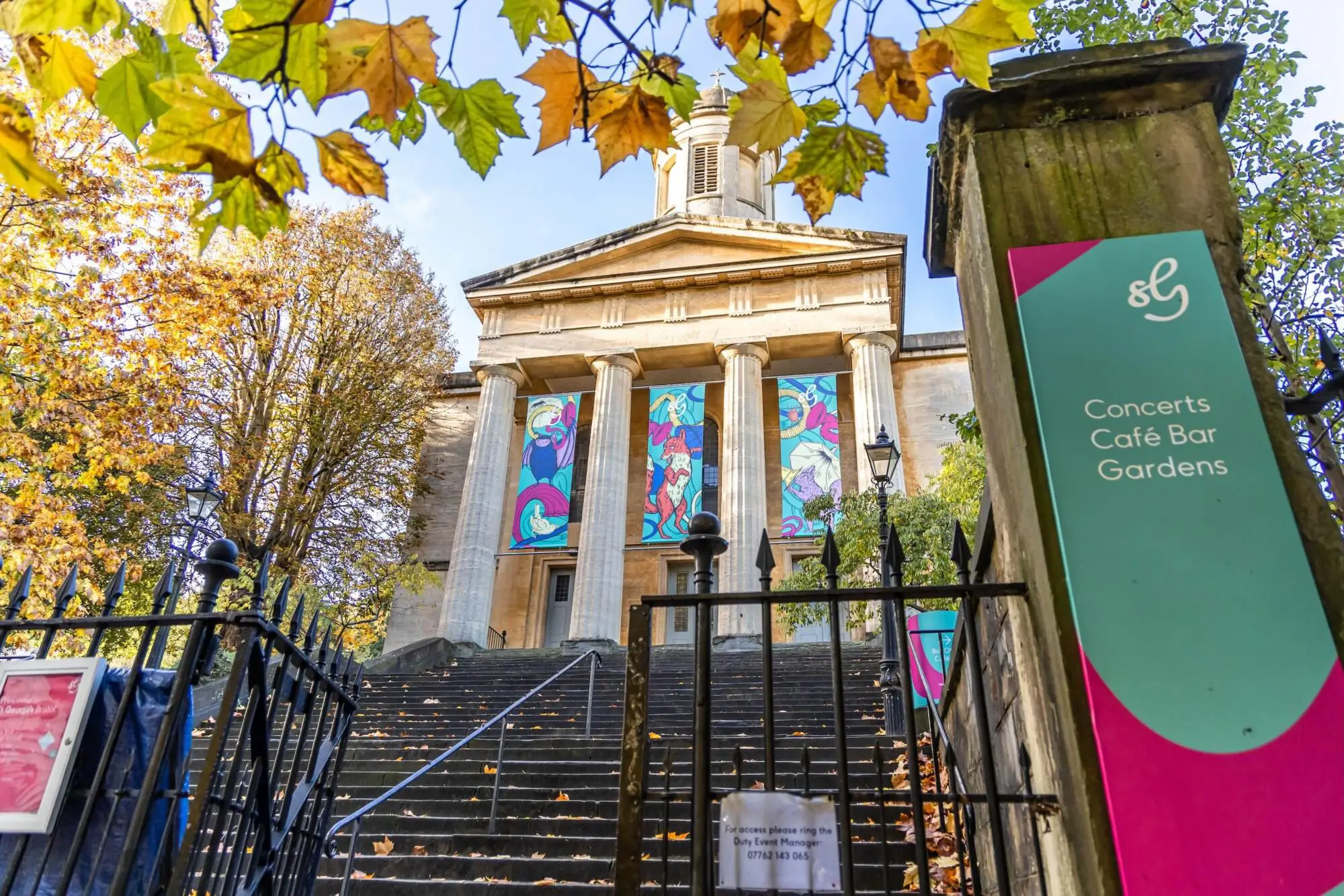why lux level surveys matter now
Emergency lighting is only truly safe when it is verified in the real building, not just on drawings. Lighting Surveys confirm that critical spaces are lit as intended so people can find exits quickly during loss of mains power. Right now there is added urgency across many sectors, with remediation programmes and changing guidance putting emergency lighting under closer scrutiny. For context, see why building owners are treating emergency lighting a key priority. A Lux Level Survey records on-site illuminance and documents the evidence you need for acceptance, handover, and periodic checks. It highlights shortfalls early and gives you a clear actions list to regain compliance without guesswork.
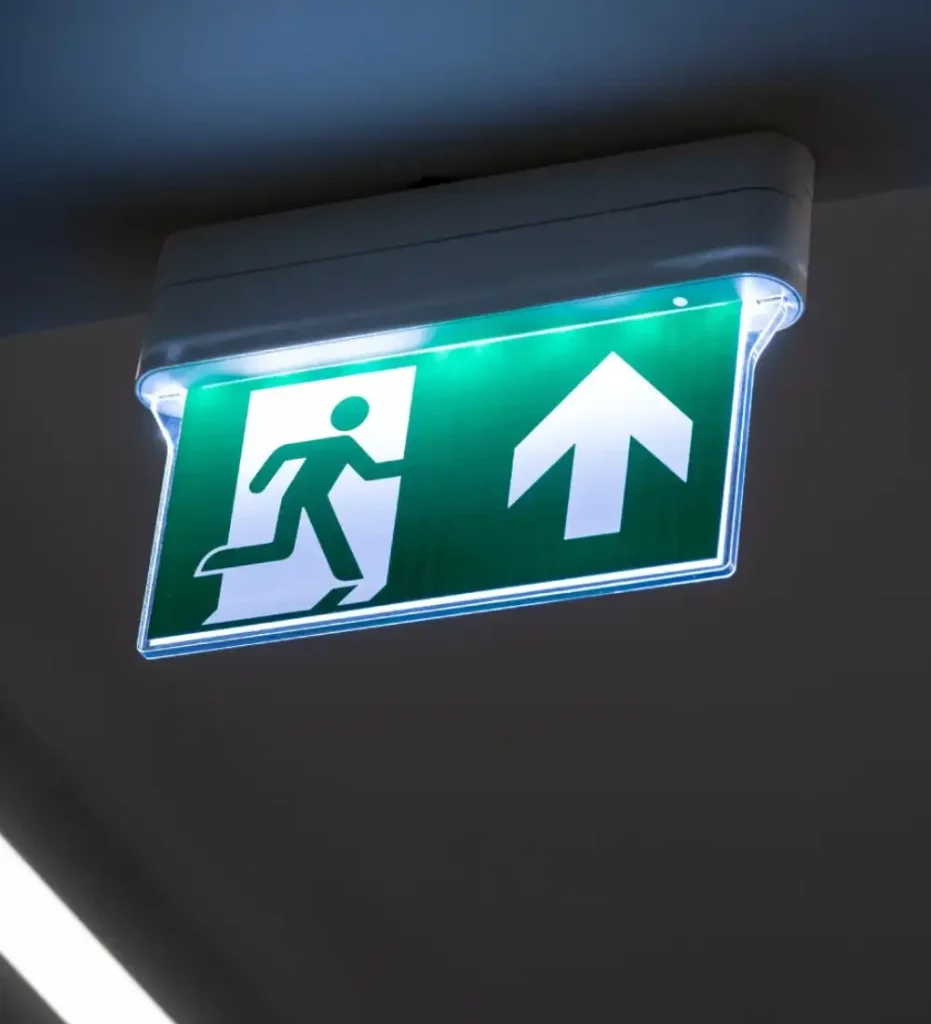
What a lux level survey is vs general lighting survey
A lighting survey is a broad assessment of a site’s lighting condition, efficiency, and suitability for tasks. It often includes energy improvements and controls advice. A lux level survey is narrower and more technical. It focuses on measured illuminance and uniformity against defined criteria, with readings taken on a grid at the working plane and results tabulated against pass thresholds. For emergency lighting, the survey concentrates on escape routes, open areas, high risk task areas, and safety signs, capturing as-found conditions with photographs and calibration references. This article prioritises emergency verification, not energy upgrades, so we will keep the scope tightly aligned to compliance evidence. Where appropriate, we will refer to Lux Lighting Surveys as the method used to document measured light levels for sign-off and re-verification.
BS EN 1838:2024 in practice: initial and 5 year checks
The 2024 edition of BS EN 1838 makes it clear that emergency lighting must be verified on installation and rechecked at 5 year intervals to ensure the design intent still holds true in the real building. An initial Lux Level Survey provides acceptance evidence at handover, while the 5 year re-verification confirms that changes in layout, surface reflectance, maintenance, or control settings have not pushed the system below the required illuminance and uniformity. For clients who need a complete route to sign off, our independent survey and report service fits neatly alongside your risk assessment and maintenance records, with clear pass and action outcomes. If non conformities are found, you will know exactly where, why, and how to rectify them. For wider process detail, see our guide to Emergency Lighting Compliance. This section of the standard is about proven performance, not just calculations, which is why measured values and calibration references are included in every report.
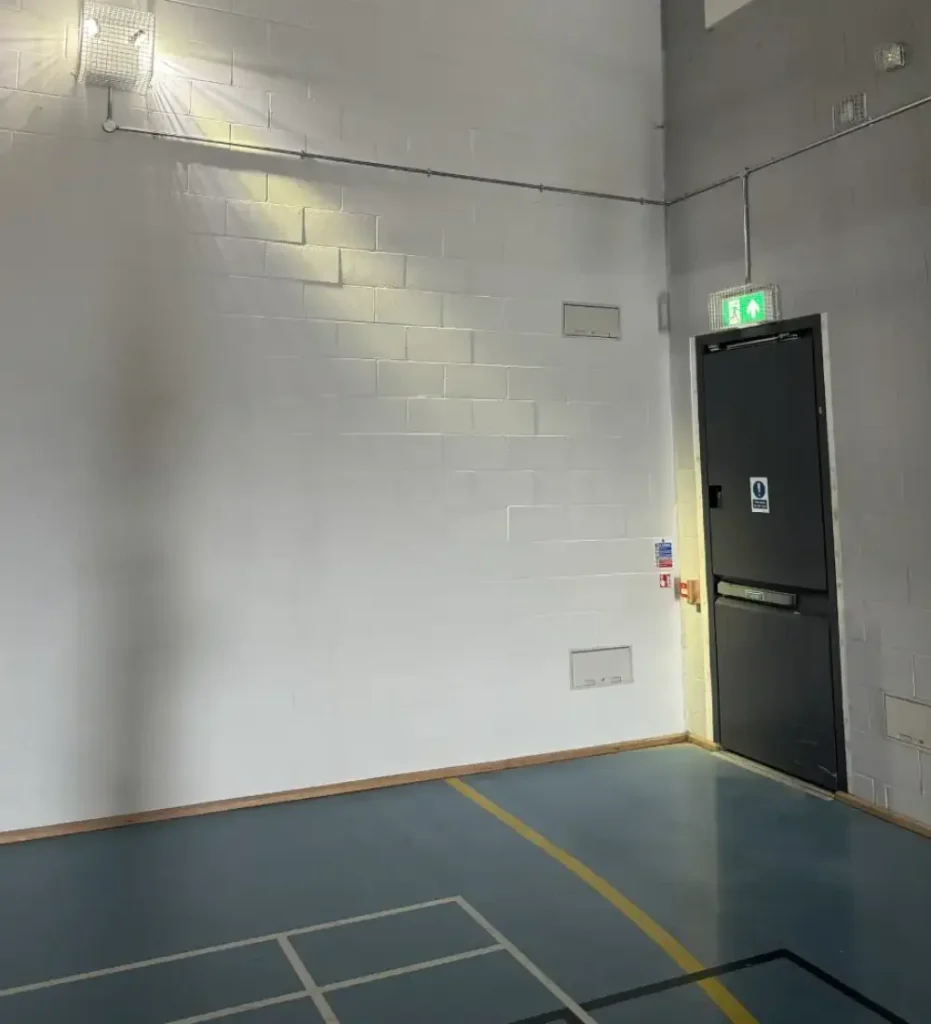
Spaces we verify: escape routes, open areas, high risk task areas, safety signs
Emergency lighting has one job in a power loss event: help people move safely and quickly. Our Lighting Surveys focus on the spaces that matter most. Escape routes are checked along their full width so occupants can follow a clear path. Open areas are measured to avoid panic and to help people reach a route. High risk task areas are verified so dangerous processes can be shut down safely. Safety signs are assessed for visibility and correct operation. We also consider accessibility, keeping in mind the role of lighting in ensuring access for all. The outcome is a space by space picture of compliance that highlights any shortfalls and the quickest way to close them before re-inspection.
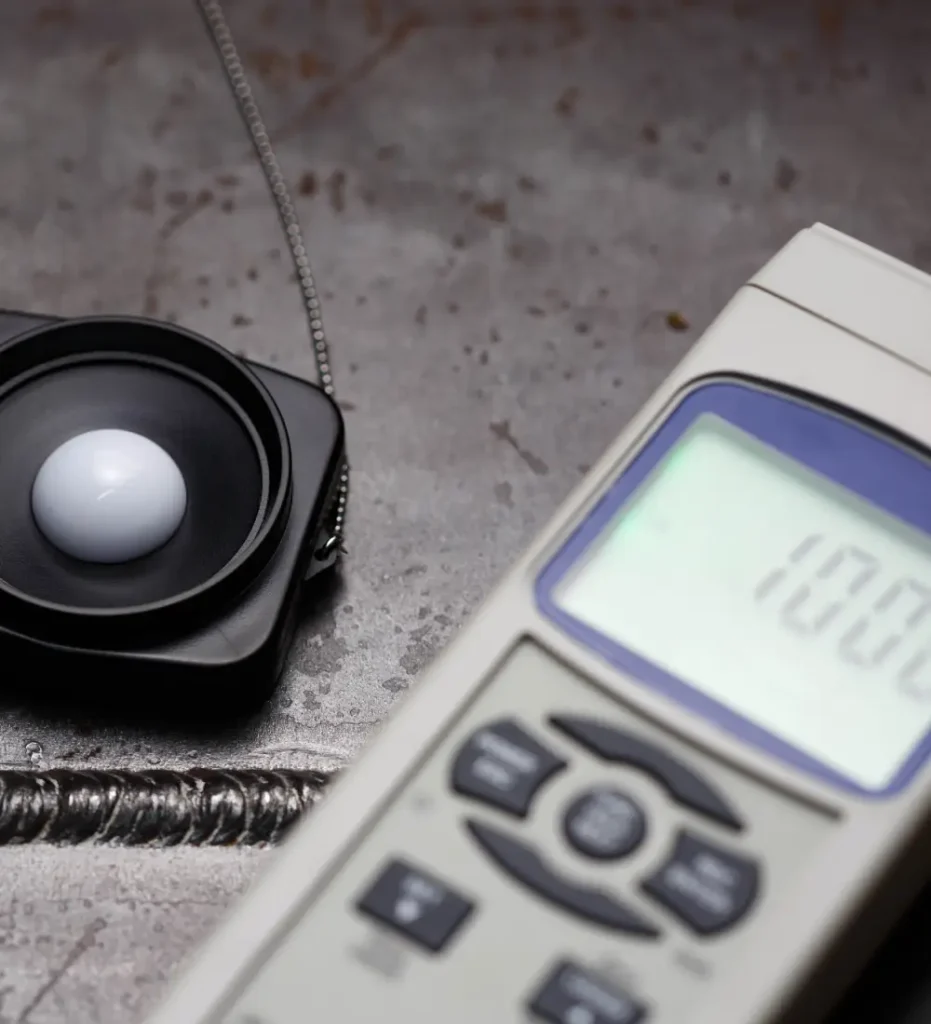
How we measure on site: instruments, method, and recording conditions
A Lux Level Survey is only as reliable as the instruments and method. We use Class 2 or better light meters in line with CIE 231:2019 or DIN 5032-7. Meters are accurate to the photopic response of human vision, cosine corrected to read light arriving from different angles, calibrated with current certificates, and temperature controlled where needed. Resolution meets compliance needs at 0.01 lux for illuminance and 0.1 cd/m² for luminance.
On site we set up a measurement grid suited to each space type and working plane. Readings are taken after the emergency system has stabilised, with ambient conditions noted. We log maintained and non maintained operation, circuit behaviour, and any obstructions that could affect results. Photographs record the as found state, including soiling and masking. Where appropriate, validated calculations are used to reduce the number of physical measurement points, but only when the measured spot checks confirm the predicted values within acceptable tolerance. Results are tabulated against required minimums and uniformity, with clear pass or action outcomes.
Common failures and fast fixes before re inspection
The issues we see most often can usually be fixed quickly. Typical Lighting Surveys failures include poor uniformity across escape routes, fittings blocked by new shelving or signage, soiled diffusers reducing output, aged sources, or incorrect optics for mounting height. Controls can also trip you up, such as incorrect maintained settings, timeouts, or scenes that do not deliver required output in emergency mode. Safety signs may be under lit or positioned without a clear line of sight. Our report highlights the root cause and the quickest remedy, from cleaning and relamping to repositioning fittings, adjusting optics, or updating control behaviour, so you can retest with confidence.
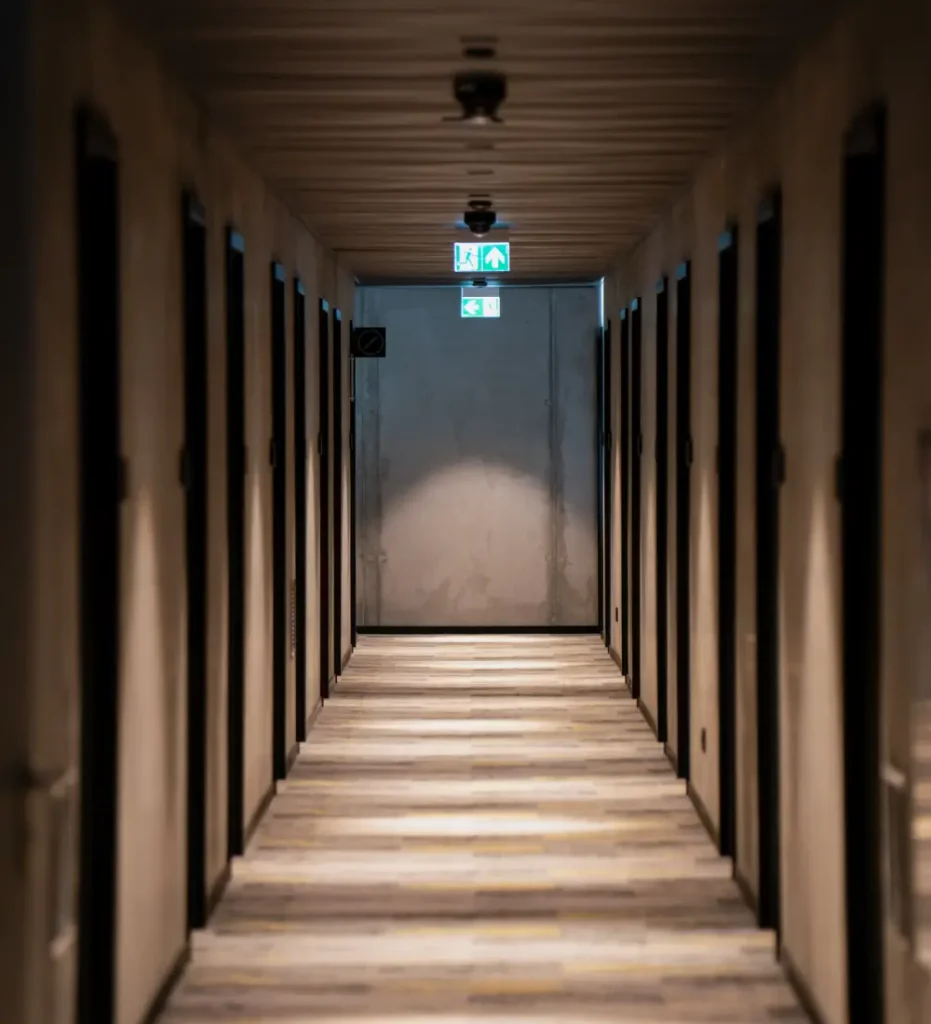
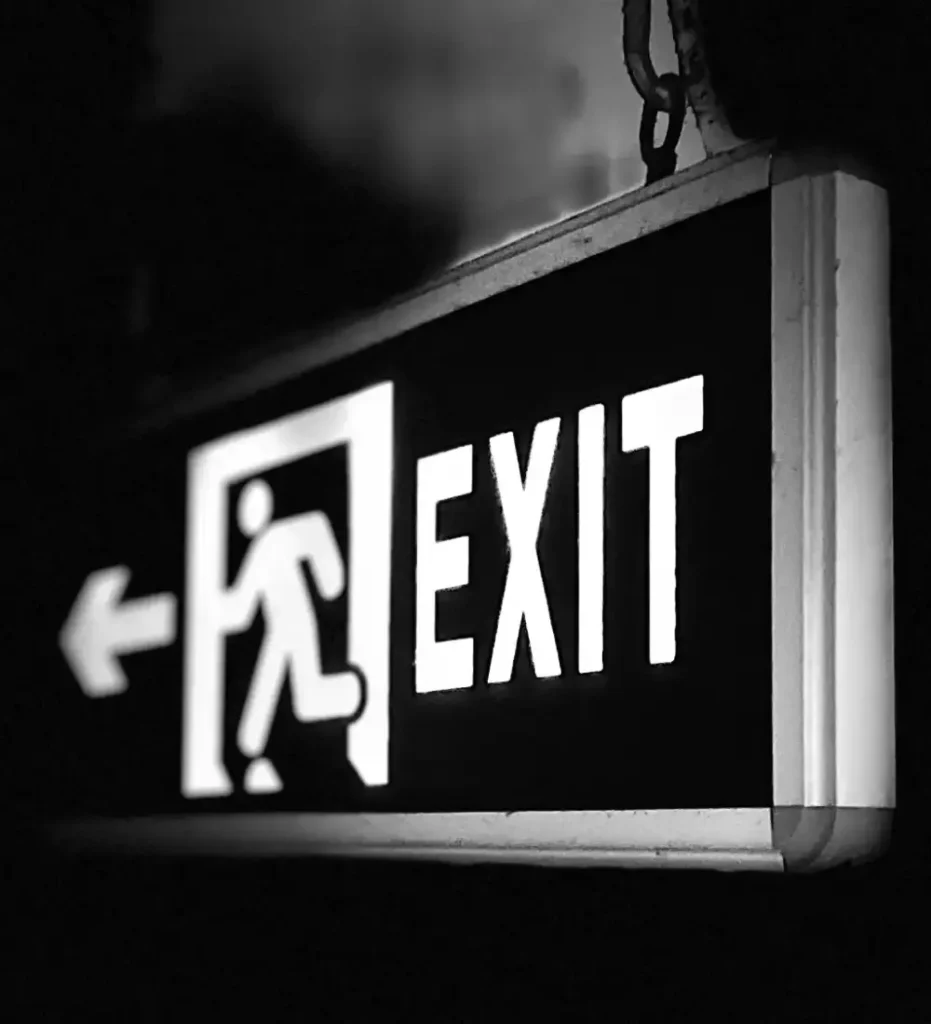
What you receive: the compliance report pack
Your report is designed for swift decision making. It includes marked drawings showing the measurement grid, a readings table with target vs measured values and variance, photographic evidence of the as found state, copies of calibration certificates, and a prioritised actions list to close any non conformities. Where requested, we add a short certificate of conformity after issues are rectified and re tested. This section references the Lux Level Survey method throughout so the evidence stands up to internal audits, insurers, and regulators. If you would like us to deliver remedials and re test, our team can provide design, controls, and commissioning through our turn-key project solutions.
Costs, access, and how to prepare for survey day
Good preparation keeps Lighting Surveys efficient. Please arrange safe access to all areas, a site contact, recent maintenance records, and access to distribution boards where switch tests are required. Let us know about any layout changes since design, and any planned shutdown windows. We will confirm the survey scope, estimated duration, and any special access equipment in advance so the visit runs smoothly.
Why you can trust Connected Light
Independent surveys, compliant Class 2 instruments, and a commissioning pedigree across complex buildings. Our team combines lighting design, controls expertise, and practical site experience to give you reliable, actionable results.
Contact us to discuss your building requirements and book an independent lux level survey.
Related case studies
Lf Jones, Chilled & Frozen Goods Warehouse
Mccoll’s Retail Group
Flexible Lighting Control Brings New Life to St George’s Bristol
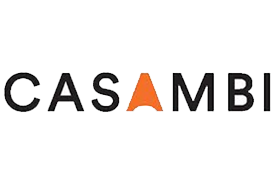
As a valued partner, Connected Light has consistently demonstrated their commitment to delivering sizable projects of lighting controls into various industries, including blue chip clients, retail, and hospitality.... Read More

The service Connected Light offer to us is invaluable. They have access to a wide range of manufacturers and luminaires that enhance any lighting design, provide the back-up calculations, control philosophy and on-site commissioning.... Read More

As a long-standing partner of ConnectedLight, Signify Commercial UKI is proud to be associated with such an adaptable and innovative company. ConnectedLight's expertise in lighting services,... Read More

As a valued partner, Connected Light has consistently demonstrated their commitment to delivering sizable projects of lighting controls into various industries, including blue chip clients, retail, and hospitality.
One of the key aspects that sets Connected Light apart, is their comprehensive range of services. They offer project management, installation partnerships, commissioning services, emergency lighting solutions, and building surveys. This comprehensive approach ensures that clients receive a seamless ‘concept-to-completion’ project service, where every aspect of the project is handled with expertise and precision.
Connected Light's expertise in lighting controls has been invaluable to Casambi Technologies. Their ability to understand the unique requirements of each project and deliver tailored solutions has been instrumental in both our successes. The team at Connected Light is highly skilled and knowledgeable, ensuring that every project is executed with the utmost professionalism.
Their ability to navigate and understand the client’s needs and complexities in this cross platform of sectors, continually delivers exceptional results and is a testament to their expertise and dedication.
In conclusion, Connected Light is an exceptional partner for us at Casambi Technologies. Their commitment to delivering sizable projects, their comprehensive range of services, and their expertise in various industries make them a valued and trusted delivery partner and one we are very privileged to be associated with. We highly recommend Connected Light for any lighting control projects, as they consistently deliver excellence and exceed expectations.

The service Connected Light offer to us is invaluable. They have access to a wide range of manufacturers and luminaires that enhance any lighting design, provide the back-up calculations, control philosophy and on-site commissioning. This makes Connected Light a great resource of knowledge for end to end luminaire and controls capability.
Connected Light have provided support on various projects, especially those with Philips luminaires as they have a very deep knowledge of the range and products on offer, and can integrate with third party lighting controls.

As a long-standing partner of ConnectedLight, Signify Commercial UKI is proud to be associated with such an adaptable and innovative company. ConnectedLight's expertise in lighting services, combined with Signify's cutting-edge technology and products, has resulted in a strong and dynamic partnership that consistently delivers outstanding lighting solutions. This collaboration has enabled us to provide our customers with sustainable lighting solutions, which have exceeded expectations in terms of efficiency, functionality, and aesthetics. We highly recommend ConnectedLight for their exceptional lighting services and look forward to continuing our partnership for many years to come.




